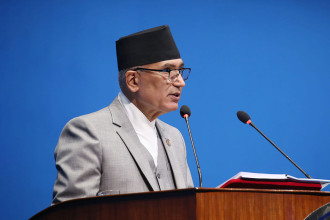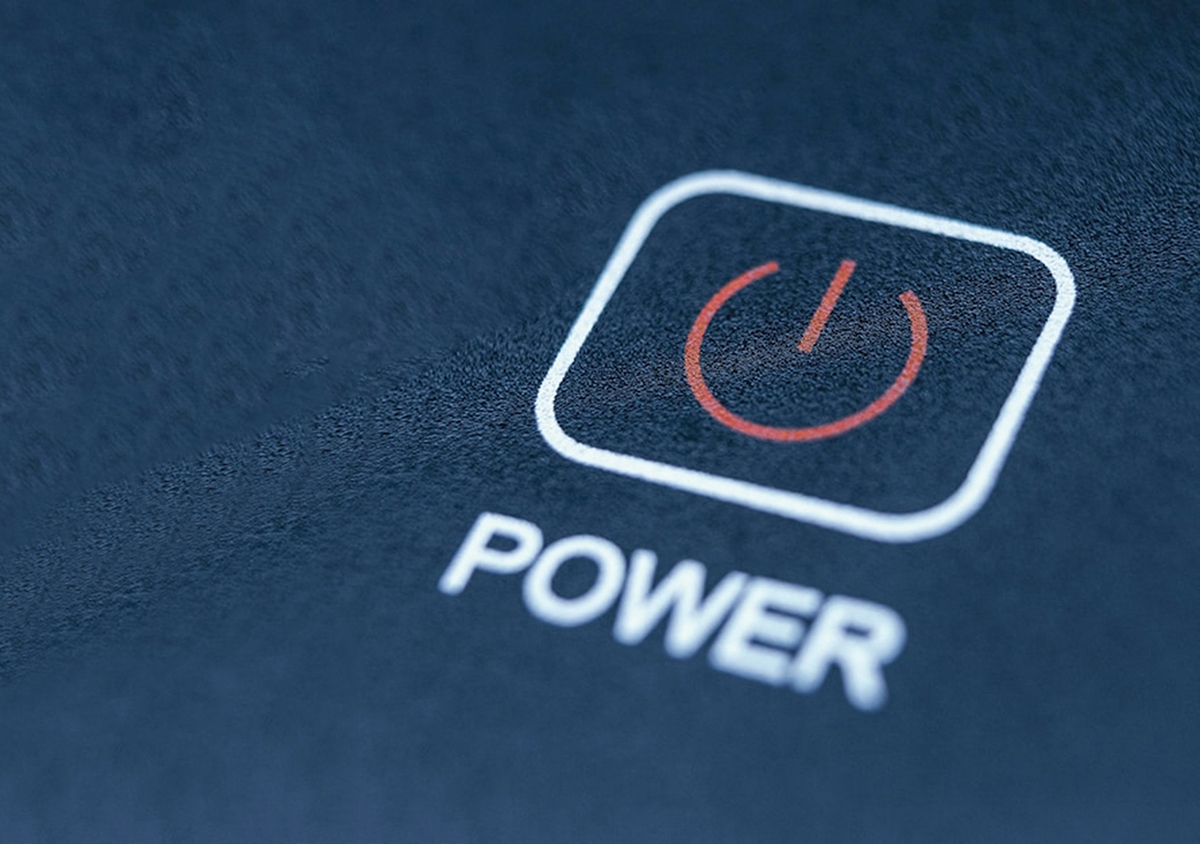
Nepal has commenced exporting electricity to the regional market, primarily to India and Bangladesh. During the 2024 wet season, Nepal exported a peak of 941 MW of electricity to India from 28 energy projects and an additional 40 MW to Bangladesh.
An agreement was finalised in January 2024 whereby India will import 10,000 MW of electricity from Nepal, following a commitment made during former Prime Minister Pushpa Kamal Dahal's visit to India in June 2023. In the initial year of the agreement, India has been importing one-tenth of the agreed-upon volume with gradual increases anticipated in the coming years alongside the completion of major energy projects currently under construction.
Moreover, a trilateral arrangement for energy trade has been established, facilitating the sale of Nepal's clean energy in the regional market. As per the agreement between Nepal and Bangladesh, 40 MW of electricity will be exported annually from Nepal to Bangladesh for five years, from June 15 to November 15. This electricity will be transmitted through the 400 KV Baharampur (India) - Bheramara (Bangladesh) transmission line. The agreement came into effect on November 15, 2024, alongwith the commencement of 40 MW electricity export from Nepal to Bangladesh.
This trilateral power trading arrangement marks the first-ever instance of such power flow, and was jointly inaugurated by Nepal's Energy Minister, Deepak Khadka; India's Union Minister for Power, Manohar Lal; and Bangladesh's Power Adviser, Fouzul Kabir Khan. The next export cycle is scheduled to commence on June 15, 2025.
Buoyed by these significant advancements in power trade, the Ministry of Energy, Water Resources and Irrigation (MoEWRI) recently unveiled a new 'Energy Sector Development Roadmap 2025'. This roadmap envisions the development of 28,000 MW of electricity by 2035.
The vision document sets an ambitious target of mobilising $46.5 billion in the energy sector by 2035. (See Table 1)
Independent power producers have expressed policy concerns regarding the implementation of the vision paper unveiled by the Ministry of Energy, Water Resources and Irrigation (MoEWRI).
"If implemented, this will be instrumental in revenue mobilisation, productivity enhancement and job creation," stated Ganesh Karki, President of the Independent Power Producers' Association Nepal (IPPAN).
IPPAN asserts that over 750,000 jobs will be created annually during the roadmap's implementation, contributing an additional 150,000 long-term jobs alongside the development of new infrastructure. Furthermore, the government stands to gain substantial revenue. It is estimated that the government will mobilise Rs 375 billion from Value Added Tax (VAT) and Rs 88 billion in other revenues during the construction phase of energy and transmission projects. Additionally, IPPAN projects annual royalty revenues of Rs 2.5 billion during the roadmap's implementation.
However, IPPAN emphasises the critical need for legal and procedural reforms to ensure successful roadmap implementation. Private sector players have developed 190 projects with an installed capacity of 2,740 MW to date. Concurrently, 141 projects with a rated capacity of approximately 4,063 MW are under construction. Moreover, another 141 projects are poised for financial closure following the conclusion of Power Purchase Agreements (PPAs) with Nepal Electricity Authority (NEA), the country's sole power off-taker. (See Table 2)
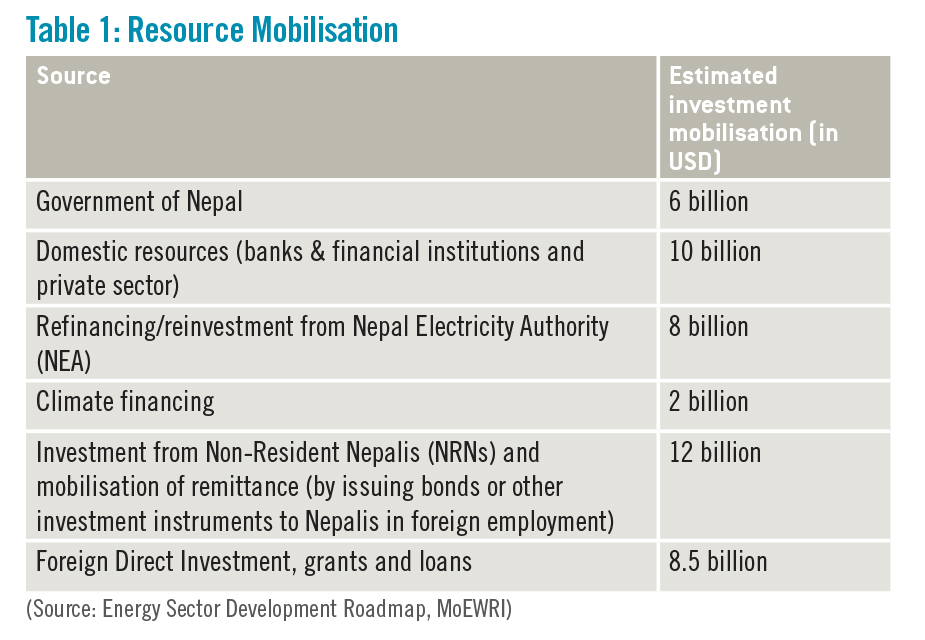
Balancing export and domestic demand
Nepal possesses abundant clean energy generation potential, largely untapped due to limited market access. While market assurance remains crucial, Nepal's energy sector has witnessed significant strides in the past decade. Experts acknowledge the 2035 vision as ambitious yet achievable, poised to transform Nepal's development trajectory.
However, such ambitious visions have been articulated repeatedly with each successive energy minister unveiling plans, but only very few of which have been fully realised. Despite this, these blueprints have catalysed substantial progress.
Currently, a debate persists regarding the most effective path towards rapid and sustainable prosperity for Nepal: maximising electricity exports or prioritising domestic consumption to fuel economic growth.
Ratna Sansar Shrestha, a water resources analyst, aptly summarises this perspective: "Becoming wealthy by selling electricity is akin to aspiring to riches through foreign employment. True prosperity lies in harnessing domestic electricity consumption to stimulate economic multipliers across manufacturing, advanced irrigation, construction and other energy-intensive sectors. Simultaneously, enhancing household electricity access will improve overall quality of life."
There is no doubt that the country must significantly increase electricity consumption to sustain higher economic growth through enhanced productivity and job creation. The government and Nepal Electricity Authority have been implementing various strategies, including revisions to the tariff structure, to stimulate domestic electricity demand.
However, considering NEA's suppressed demand forecast, independent power producers have been actively exploring the regional market as an avenue for energy sales. Given that NEA currently serves as the sole power off-taker in the country, the government's recent authorisation for private sector players to utilise transmission infrastructure for power trade has opened new avenues for independent power producers to directly negotiate and sell electricity to international markets.
Currently, NEA participates in daily auctions at the Indian Energy Exchange (IEX) to sell electricity, with the tariff determined by the IEX. According to Kulman Ghising, Managing Director of NEA, "We are selling approximately 400 MW through bilateral trading mechanisms, where tariffs are pre-determined during negotiations."
Market assurance has attracted substantial foreign direct investment (FDI) into the energy sector. In addition to India, Bangladesh has expressed strong interest in investing in Nepal's hydropower projects to secure electricity imports. Recognising the critical need for clean energy, Nepal and Bangladesh are currently negotiating a joint venture for the 683 MW Sunkoshi III hydropower project. (See Table 3)
Significantly, energy trade and a gradual increase in domestic demand have contributed to mitigating the alarming trade deficit. According to Nepal Electricity Authority, peak domestic demand in Nepal hovers around 1,600 MW. Various trade diagnostic studies have emphasised the importance of balancing trade through energy exports and reducing reliance on fossil fuels by promoting clean cooking solutions, clean transportation and other sustainable alternatives. Recognising this potential, the Ministry of Industry, Commerce and Supplies has prioritised electricity as a commodity with significant comparative and competitive advantages in the Nepal Trade Integration Strategy (NTIS).
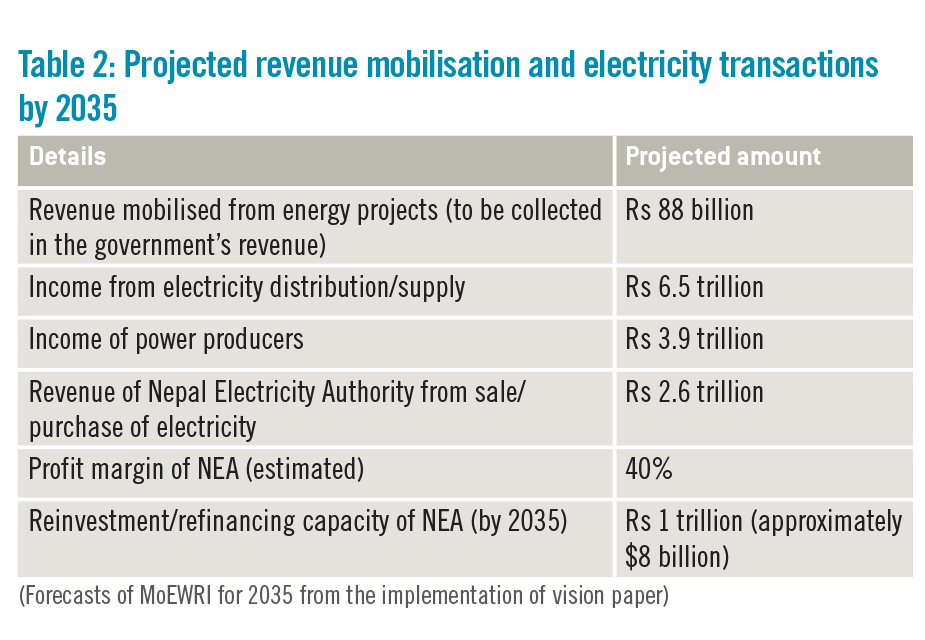
Energy security
Energy is paramount for economic growth and all nations prioritise energy security with the same urgency as food and nutrition security. Energy fuels production, growth and human well-being. Recognising this, Nepal urgently needs a comprehensive long-term energy security plan. Currently, Nepal lacks energy security, heavily relying on imports to meet its energy demands. Despite over 94% of households having access to electricity, biomass remains the primary energy source.
According to Energy Economist, Nabin Adhikari, the primary concern following electrification is ensuring reliable electricity supply. Nepal heavily relies on petroleum imports for transportation, cooking and construction, with fuel imports significantly impacting the country's import bill. In Fiscal Year 2023/24, petroleum imports amounted to Rs 300.65 billion, constituting 19% of the total import bill, as per the Department of Customs (DoC).
While the energy sector has gained significant momentum, Nepal must undertake substantial efforts to enhance energy security. This necessitates not only generating the required electricity but also ensuring the resilience and sustainability of the nation's energy infrastructure.
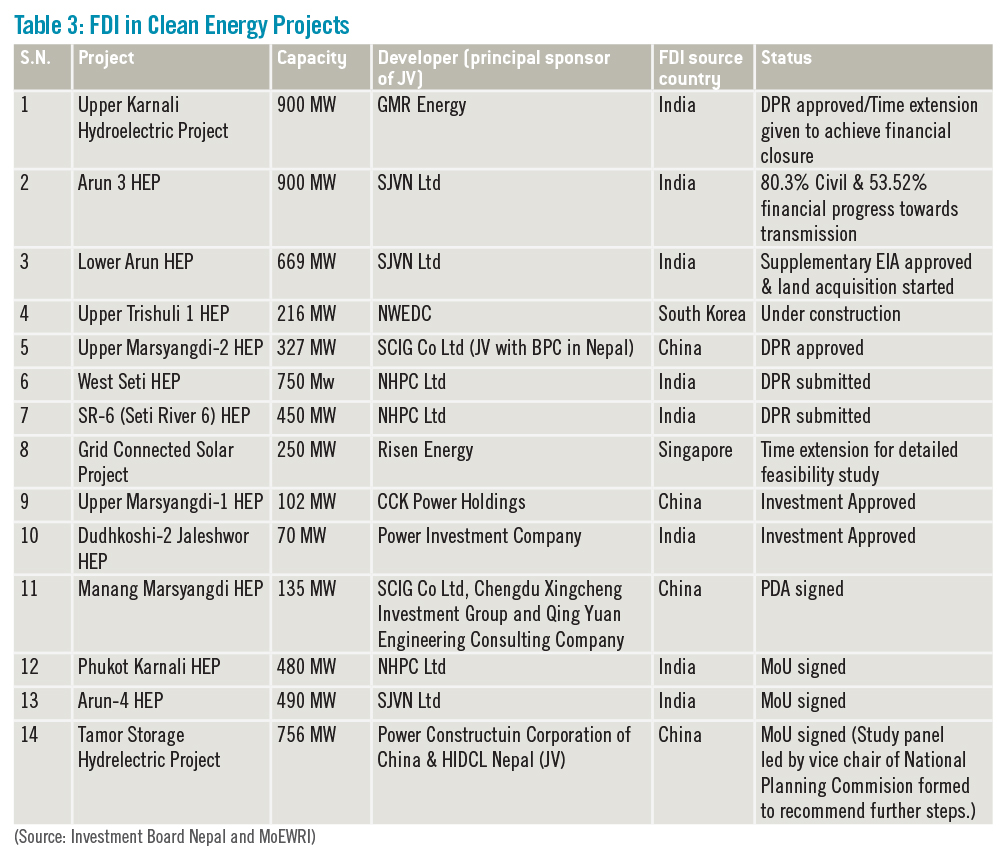
Climate change and resilience of energy infrastructure
The Government of Nepal envisions significant strides in energy sector development in the coming years. However, these ambitions face considerable challenges due to the manifold impacts of climate change, driven by rising global temperatures despite efforts to limit warming to 2°C as outlined by the UN Framework Convention on Climate Change.
Hydrological changes in snow-fed rivers, floods, inundation and glacial lake outbursts are just some of the potential consequences. Dr Bindu Lohani, Chancellor of Nepal University and former Vice President of Asian Development Bank (ADB), warns that climate change could cause GDP losses to reach double digits by 2030. He emphasises the need for comprehensive disaster preparedness, resilient infrastructure, and the implementation of mitigation and adaptation measures at all levels – individual, community and across all tiers of government, involving all stakeholders.
Moreover, global collaboration is crucial to minimise the impacts of climate change. While carbon-emitting nations have pledged to drastically reduce emissions, there are growing calls from highly vulnerable countries, with minimal contributions to global emissions, for compensation to address the adverse impacts of climate change.
Given the increasing frequency and intensity of natural disasters in recent years, building resilient infrastructure is crucial to mitigate potential GDP losses. Hydropower projects are inherently time-consuming and capital-intensive, necessitating robust measures to safeguard them from unforeseen disasters, according to Rabi Shankar Sainju, Vice Chairperson of South Asia Watch on Trade, Economics and Environment (SAWTEE).
"While the government, foreign investors and domestic power producers are investing heavily in clean and renewable energy production, primarily hydropower, and pursuing regional market access, we are not adequately addressing the critical issue of resilience and safeguarding our energy infrastructure," Sainju emphasised.
The vision paper issued by the MoEWRI acknowledges climate change as a potential risk to energy production due to hydrological changes. However, it overlooks the multifaceted impacts of climate change and fails to adequately address the mobilisation of funds from carbon trading and available climate finance for adaptation and mitigation measures.
On the other hand, the readiness of high-emitting countries to reduce their carbon emissions presents a silver lining for Nepal as a source of clean and renewable energy. "Given their heavy reliance on fossil fuels, coal and natural gas, India and Bangladesh will be eager to purchase clean and renewable energy from Nepal if we can effectively harness our hydropower potential," stated Suman Prasad Sharma, former Energy Secretary.
Sharma advocated for a locally suitable energy mix to ensure energy security. "We must prioritise viable solutions for energy security that are tailored to our specific context. The potential for disruptions to hydropower projects due to disasters poses a significant risk to reliable electricity supply," Sharma remarked, adding, "Restoration of projects damaged by disasters can take months, emphasising the need for optimising hydropower plants through grid integration with solar power, a strategy already being implemented in Nepal." Several instances demonstrate the prolonged restoration periods required for hydropower projects. The Bhote Koshi Power Plant (also known as the Upper Bhote Koshi Project), a run-of-the-river plant in Sindhulpalchok district, took several years to recover from the devastating floods of 2020.
Most importantly, hydropower projects are mandated to allocate 0.5% of their project cost towards local community development, as outlined in the Local Development Plan. Sainju, Vice Chairperson of SAWTEE, emphasised the need for seamless integration of the local development plan with hydropower production.
"Hydropower projects often develop essential infrastructure such as roads, community schools, electrification and water supply," Sainju stated. "However, these efforts must be complemented by livelihood support programmes, including skill development for income-generating activities, to effectively transform the living standards of local communities. The hilly regions of Nepal, where many hydropower projects are situated, possess significant agricultural potential, particularly for high-value crops, fruits, vegetables, medicinal plants and aromatic herbs. The government should facilitate collaboration between developers and local communities to maximise the benefits of the local development plan, fostering synergies between agricultural production, tourism development, and recreational services."
According to Sainju, this integrated approach will ultimately address the issue of rural-to-urban migration by transforming hilly regions into vibrant and economically viable communities with diverse economic activities.



-1761806697.jpg)
-1758006240.jpg)
-1752225714.jpg)
